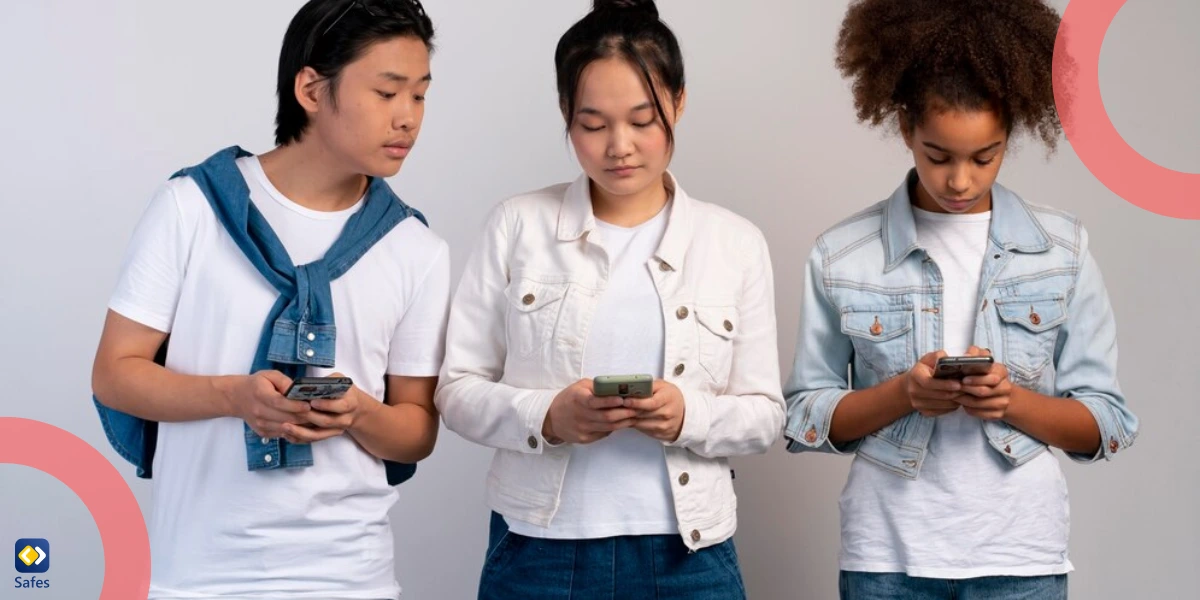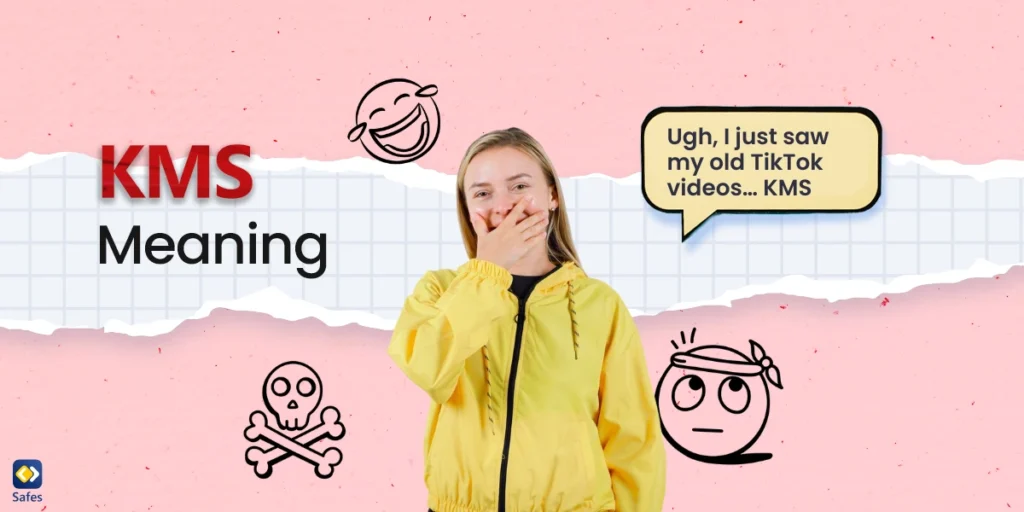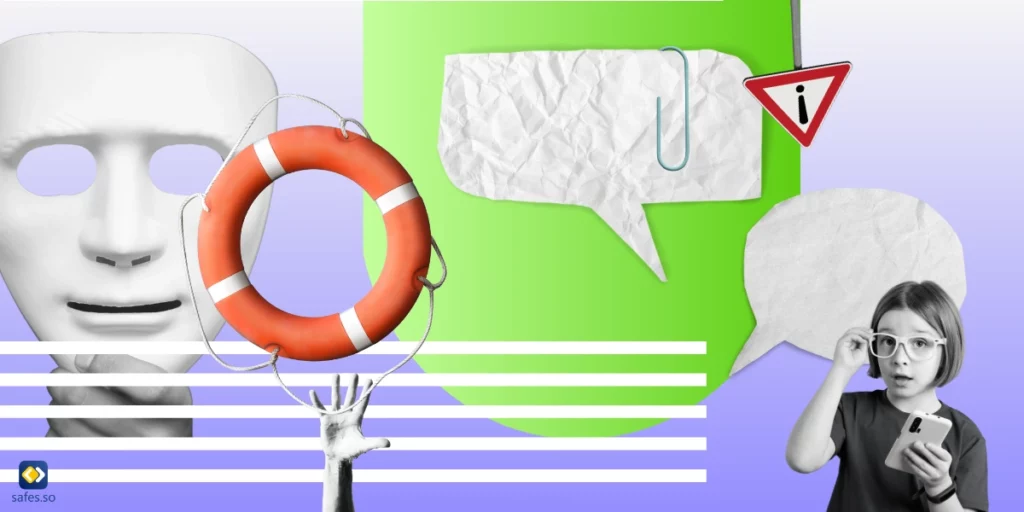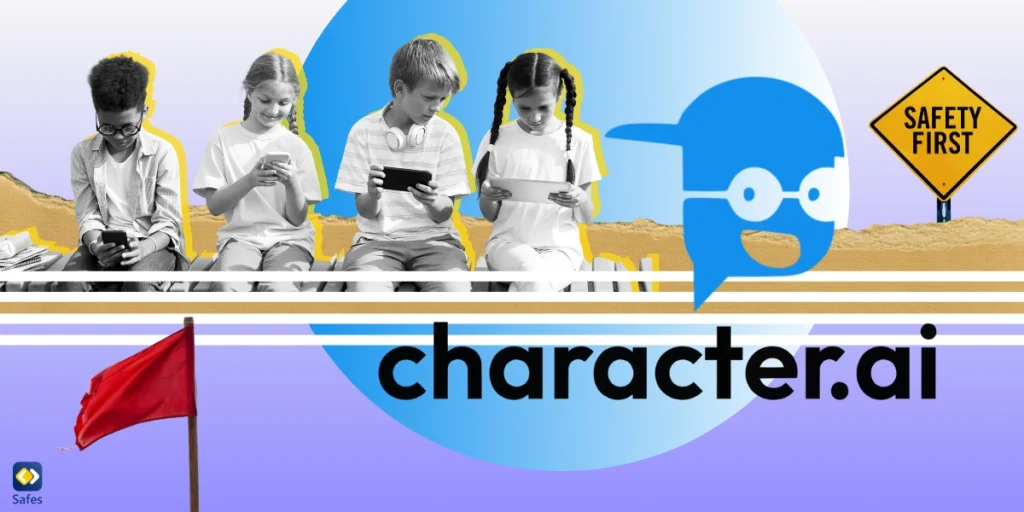If you’ve seen KMS in your child’s texts or social media posts, you might be wondering what it means. In online conversations, teens often use slang and abbreviations that can be confusing—or even concerning—to parents. KMS is one of those terms that can have different meanings depending on the context. While it’s often used casually, it can sometimes signal something more serious. Understanding the meaning of KMS and how it’s used can help parents stay informed and support their children’s online safety.
Download and Start Your Free Trial of the Safes Parental Control App
What Does KMS Mean?
KMS stands for “kill myself.” It’s commonly used in texts, social media, and gaming chats as an exaggerated reaction to embarrassment, frustration, or disappointment. For example, a teen might say, “I just failed my math test… kms lol,” to express frustration in a lighthearted way. However, in some cases, KMS can indicate genuine distress, making it important for parents to pay attention to tone and context.
Variations & Alternative Spellings
- KYS – Short for “kill yourself” (a more aggressive version, often used in cyberbullying).
- KMSL – Stands for “killing myself laughing,” a completely harmless phrase similar to LOL or ROFL.
Understanding these variations can help parents differentiate between harmless slang and potential warning signs.

How is KMS Used in Real Digital Interactions
Parents might wonder, what does KMS mean in texting? The term is widely used by teens to express exaggerated frustration, embarrassment, or disappointment. However, its meaning can change depending on the tone and context:
- Playful/Sarcastic: Used jokingly when reacting to something awkward or annoying.
- “Ugh, I just saw my old TikTok videos… KMS 😭”
- “I failed my driving test again… kms lol”
- Serious: Can indicate real emotional distress, especially if used repeatedly or in a negative tone.
- “No one even talks to me anymore… kms.”
- Aggressive: A variation, KYS (“kill yourself”), is sometimes used in a bullying or toxic manner, particularly in gaming communities.
- “You’re so bad at this game, just KYS.”
Platform-Specific Usage
Since KMS appears across multiple platforms, its meaning can vary depending on the context.
TikTok & Instagram
KMS often appears in captions or comments as a dramatic reaction to awkward or embarrassing moments. It can also be a part of trending memes or dark humor content, where it’s used to exaggerate feelings of frustration or embarrassment in a lighthearted, yet sometimes concerning, way.
- Example: A TikTok showing an embarrassing childhood photo with the caption, “KMS, why did my mom dress me like this? 😭”
What Does KMS Mean on Snapchat?
On Snapchat, KMS is often used in a lighthearted, dramatic way, especially in private messages or group chats. Teens might use it when reacting to embarrassing Snaps or annoying situations. However, if a child frequently uses KMS in serious or concerning contexts, it’s important for parents to check in.
- Example: “My mom caught me sneaking out and took my phone… KMS 😩”
What Does KMS Mean in Text?
In texting, KMS is commonly used the same way—as an exaggerated reaction to frustration or embarrassment. But since text lacks tone, it’s crucial to consider the context in which it’s used.
- Example: “I just tripped in front of my crush… kms.”
Gaming Chats (Twitch, Xbox, PlayStation, Discord)
KMS is often used to express frustration after losing a game or making a bad move, typically in a lighthearted or exaggerated manner. However, in more toxic online communities, KYS (a variation of KMS) can be used in a more hostile and harmful way, often as an insult or to escalate negative interactions.
- Example: “Bruh, I just got sniped across the map. KMS.”
KMSL Meaning in Text
A related slang term is KMSL, which means “killing myself laughing.” Unlike KMS, this phrase is entirely positive and is used to express extreme amusement, similar to LOL or LMAO.
- Example:“That meme was hilarious, KMSL! 😂”
Risk Level Indicator (Parent Alert System)
🟡 Yellow – Context matters; can be misused.
KMS is often used casually and jokingly, but context is key. While many teens use it as harmless exaggeration (“I just embarrassed myself in class… KMS lol”), it can also indicate real emotional distress in certain situations (“I feel so alone… kms.”). If a child frequently uses this term in a negative or serious tone, it could be a sign they need emotional support.
If KMS is used in a way that suggests self-harm, depression, or isolation, parents should take it seriously. It’s important to check in, ask open-ended questions, and ensure their child has the support they need. Additionally, the variant KYS (“kill yourself”) can be dangerous when used as an insult or in cyberbullying.
Trend Tracker: Is It Still Relevant?
💀 Outdated – Teens have moved on.
As of March 2025, the slang term KMS has become outdated. This phrase has largely fallen out of regular use among teenagers and online communities, replaced by newer expressions that reflect current digital culture.
Recent analyses of internet slang trends do not feature KMS among the top or emerging slang terms of 2025. For instance, a list of the top ten slang words of 2025 includes terms like “Bet,” “Bussin,” “Extra,” “Goat,” “GRWM,” “IYKYK,” “Mid,” “Cap/no Cap,” “Tea/Spill the Tea,” and “Vibe Check,” with no mention of KMS. Similarly, another compilation highlights slang such as “Brainrot,” “Rizz,” “Skibidi,” “Ohio,” “Baddie,” “Let Them Cook,” “Mewing,” “Gyatt,” “Amped,” and “Delulu,” again omitting KMS.
Given its decline in usage and relevance, KMS is now considered outdated in the ever-evolving landscape of internet slang.
Online Safety Considerations
While KMS is often used casually, parents should be aware that it can sometimes indicate concerning online behaviors.
Potential Risks
- Mental Health Warning Sign: If a child frequently uses KMS in a serious or distressing tone, it could be a sign of emotional struggles, stress, or even suicidal thoughts.
- Cyberbullying: Some teens might use KMS or its more aggressive variant KYS (“kill yourself”) to insult or pressure others online, particularly in gaming communities or social media comment sections.
Quick Tips for Parents
- Start a Conversation: If you see KMS in your child’s texts or social media, ask them what they mean by it. Keep the conversation open-ended and supportive rather than confrontational.
- Monitor Digital Habits: Use parental controls on Android or iPhone parental controls to keep an eye on their social media activity and ensure they’re not engaging in risky conversations.
- Encourage Healthy Expression: Help your child find better ways to express emotions, whether through talking, journaling, or creative outlets.
- Watch for Red Flags: If your child shows signs of depression, withdrawal, or repeatedly uses self-harm-related slang, consider reaching out to a mental health professional.
By staying informed and engaged, parents can create a safe space for their children to navigate online interactions while ensuring their well-being.

How Can Safes Help?
Parental control apps like Safes provide an extra layer of protection by allowing parents to monitor their child’s online activity, set screen time limits, and filter harmful content. With features like social media tracking and keyword alerts, parents can receive notifications if concerning terms like KMS appear in their child’s messages or searches. Available on Android and iOS, Safes helps parents take a proactive approach to online safety while still respecting their child’s privacy and independence. Parents can try Safes with a free trial, allowing them to explore the app’s features and see how it works firsthand.
Conclusion
Understanding digital slang is an essential part of keeping up with your child’s online world. While many terms are harmless, some—like KMS—require extra attention due to their potential links to mental health concerns and cyberbullying. By fostering open conversations, staying aware of your child’s digital habits, and using the right tools to ensure their safety, parents can create a supportive environment where kids feel comfortable expressing themselves—both online and offline.
Your Child’s Online Safety Starts Here
Every parent today needs a solution to manage screen time and keep their child safe online.
Without the right tools, digital risks and excessive screen time can impact children's well-being. Safes helps parents set healthy boundaries, monitor activity, and protect kids from online dangers—all with an easy-to-use app.
Take control of your child’s digital world. Learn more about Safes or download the app to start your free trial today!




